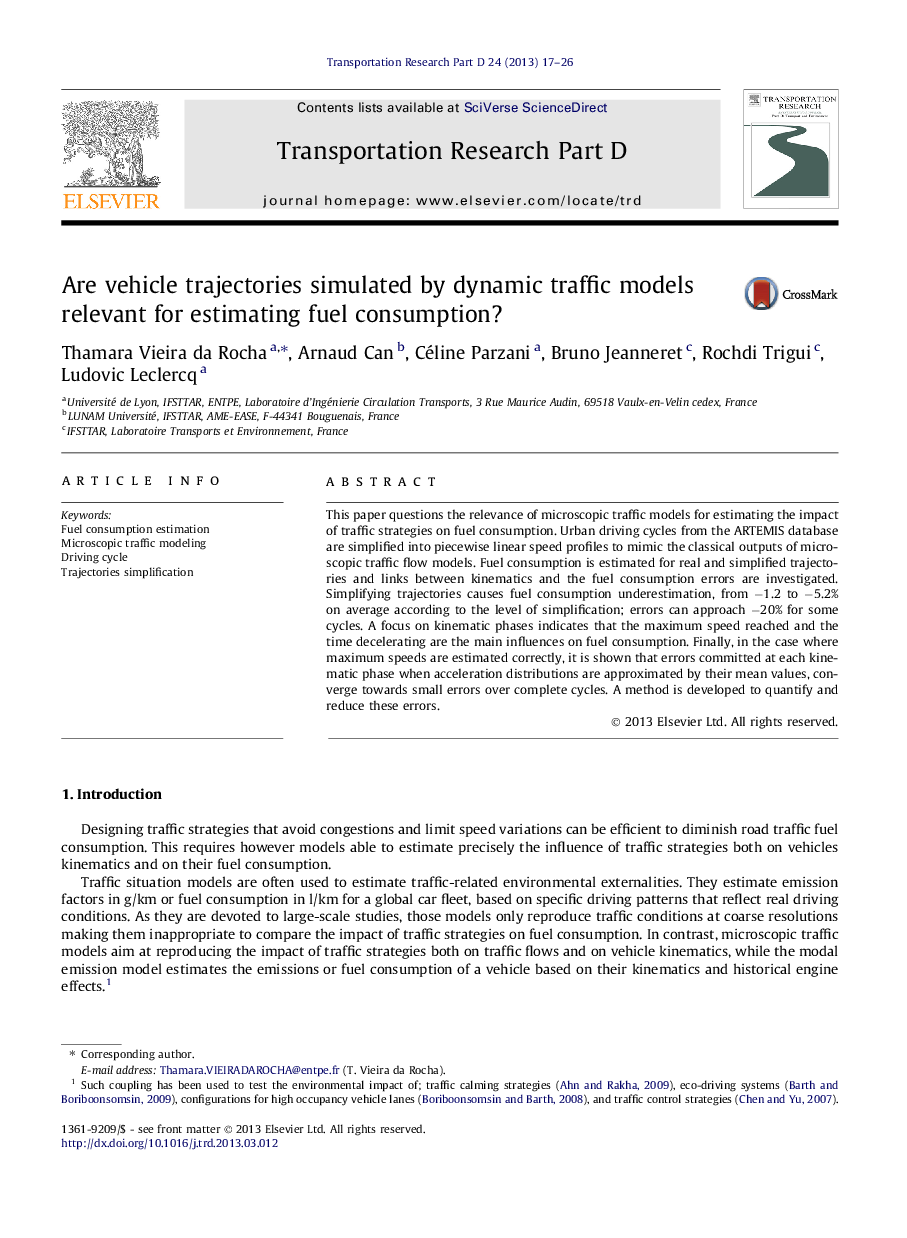| Article ID | Journal | Published Year | Pages | File Type |
|---|---|---|---|---|
| 1065786 | Transportation Research Part D: Transport and Environment | 2013 | 10 Pages |
•Real-world driving cycles are simplified to correspond to the classical outputs of microscopic traffic flow models.•Fuel consumptions of original and simplified trajectories are compared.•The maximal speed and the time decelerating are the main influence on fuel consumption.•Accurate simulation of fuel consumption can be achieved from outputs of microscopic traffic models.
This paper questions the relevance of microscopic traffic models for estimating the impact of traffic strategies on fuel consumption. Urban driving cycles from the ARTEMIS database are simplified into piecewise linear speed profiles to mimic the classical outputs of microscopic traffic flow models. Fuel consumption is estimated for real and simplified trajectories and links between kinematics and the fuel consumption errors are investigated. Simplifying trajectories causes fuel consumption underestimation, from −1.2 to −5.2% on average according to the level of simplification; errors can approach −20% for some cycles. A focus on kinematic phases indicates that the maximum speed reached and the time decelerating are the main influences on fuel consumption. Finally, in the case where maximum speeds are estimated correctly, it is shown that errors committed at each kinematic phase when acceleration distributions are approximated by their mean values, converge towards small errors over complete cycles. A method is developed to quantify and reduce these errors.
